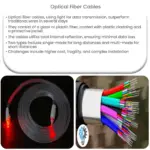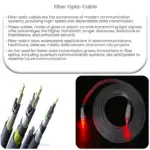What is FSO Technology?
Free Space Optics (FSO) is a communication technology that uses optical signals to transmit data wirelessly through the atmosphere. This technology works by transmitting light signals between two points without the use of any physical medium such as cables, wires or fiber optics. FSO is a line-of-sight technology, which means that the two communicating devices must have an unobstructed view of each other.
FSO technology can transmit data at very high speeds, up to several gigabits per second (Gbps). It is commonly used as an alternative to traditional wired or wireless communication technologies where high-speed data transmission is required over a short distance, typically within a campus or metropolitan area.
Historical Development of FSO
The idea of using light for wireless communication dates back to the 19th century when Alexander Graham Bell, the inventor of the telephone, proposed the concept of using light to transmit voice signals wirelessly. However, it wasn’t until the 1990s that the technology became practical with the development of efficient light sources, photodetectors, and optical components.
The first commercial FSO systems were introduced in the late 1990s and early 2000s, and since then, the technology has been continuously improving, making it more reliable and cost-effective. Today, FSO is used in a variety of applications, including telecommunications, military, and security.
How FSO Works?
FSO works by transmitting an optical signal through the air between two points, typically using infrared or visible light. The signal is modulated with the data that needs to be transmitted, and then it is transmitted using a highly directional optical beam. The receiver at the other end receives the optical signal, demodulates it, and then decodes the data.
The primary components of an FSO system are a laser or LED transmitter, receiver, and optics, which are used to focus and direct the optical beam. The system can operate over distances of up to several kilometers, depending on the atmospheric conditions and the power of the optical source.
Examples of FSO Applications
FSO technology has a wide range of applications, including:
- Telecommunications: FSO is used to provide high-speed data communication within a campus or metropolitan area. It is used as an alternative to traditional wired or wireless communication technologies.
- Military: FSO is used by the military for secure communication between bases and for battlefield communication. It is immune to electromagnetic interference and is difficult to intercept, making it ideal for military applications.
- Security: FSO is used in security systems for surveillance, perimeter protection, and access control. It provides high-speed communication without the need for physical cabling, making it easier to install and maintain.
In conclusion, FSO technology is a promising communication technology that has the potential to revolutionize the way we transmit data wirelessly. It offers high-speed data communication, high security, and immunity to electromagnetic interference, making it ideal for a wide range of applications. As the technology continues to improve, we can expect to see more widespread adoption of FSO in the coming years.




